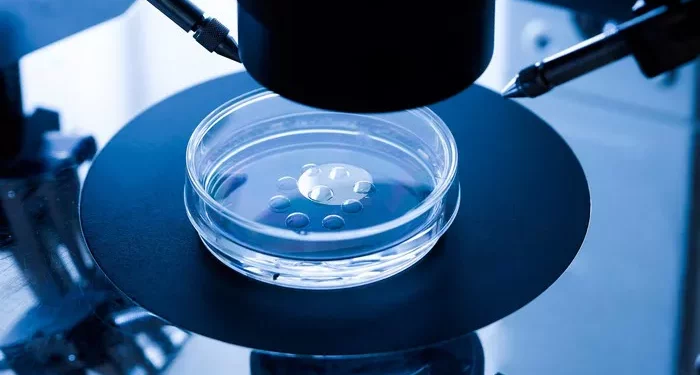Low seminal fluid volume, medically known as hypospermia, can be a distressing condition for men, particularly those facing infertility challenges. Seminal fluid, produced primarily by the seminal vesicles and the prostate gland, plays a crucial role in the transport and nourishment of spermatozoa. When the volume of this fluid is low, it can significantly impact fertility. This article aims to provide an in-depth examination of the various causes of low seminal fluid volume, exploring physiological, pathological, and lifestyle factors. By understanding these causes, we can better address and manage this condition, improving outcomes for affected individuals.
Ejaculatory Duct Obstruction
One of the primary causes of low seminal fluid volume is ejaculatory duct obstruction. The ejaculatory ducts are responsible for transporting seminal fluid from the seminal vesicles and the prostate gland into the urethra. When these ducts are blocked, the flow of seminal fluid is impeded, leading to reduced ejaculate volume. Causes of ejaculatory duct obstruction include:
Congenital Abnormalities: Some men are born with anatomical defects that affect the ejaculatory ducts. These defects can include atresia (absence or closure) of the ducts, which prevents the passage of seminal fluid.
Infections and Inflammation: Infections of the reproductive tract, such as prostatitis or epididymitis, can lead to inflammation and subsequent scarring of the ejaculatory ducts. This scarring can block the ducts and reduce seminal fluid volume.
Cysts and Tumors: The presence of cysts or tumors in or around the ejaculatory ducts can physically obstruct the flow of seminal fluid. Mullerian duct cysts and ejaculatory duct cysts are common examples.
Surgical Trauma: Previous surgeries involving the prostate or seminal vesicles can damage the ejaculatory ducts, leading to obstruction.
Prostate Issues
The prostate gland is a key contributor to seminal fluid production, accounting for about 30% of the total volume. Conditions affecting the prostate can therefore significantly impact seminal fluid volume:
Prostatitis: Inflammation of the prostate gland, known as prostatitis, can reduce seminal fluid production. This condition can be caused by bacterial infections or non-infectious factors such as autoimmune responses or chronic pelvic pain syndrome.
Benign Prostatic Hyperplasia (BPH): BPH is a non-cancerous enlargement of the prostate gland that commonly occurs in older men. This enlargement can compress the urethra and ejaculatory ducts, leading to reduced seminal fluid output.
Prostate Surgery: Surgical procedures on the prostate, such as transurethral resection of the prostate (TURP) or prostatectomy, can damage the gland and its ducts, resulting in decreased seminal fluid production.
Seminal Vesicle Dysfunction
The seminal vesicles contribute approximately 60-70% of the total seminal fluid volume. Dysfunction of these glands can therefore lead to significant reductions in ejaculate volume:
Congenital Absence or Hypoplasia: Some men are born with underdeveloped or absent seminal vesicles. This congenital condition, known as seminal vesicle hypoplasia or agenesis, results in reduced seminal fluid production.
Infections and Inflammation: Similar to the prostate, the seminal vesicles can be affected by infections and inflammation. Seminal vesiculitis, an inflammation of the seminal vesicles, can reduce their secretory function.
Cysts and Obstructions: Cysts in the seminal vesicles or blockages in their ducts can prevent the flow of seminal fluid into the ejaculatory ducts. This can significantly reduce the volume of ejaculate.
Surgical Trauma: Surgeries involving the pelvic region, such as procedures for colorectal cancer, can inadvertently damage the seminal vesicles and their ducts.
See Also: What You Need to Know About Semen Health
Hormonal Imbalances
Hormones play a crucial role in regulating the function of the male reproductive system, including the production of seminal fluid. Imbalances in these hormones can therefore lead to low seminal fluid volume:
Testosterone Deficiency: Testosterone is essential for the normal functioning of the male reproductive system. Low levels of this hormone, due to conditions such as hypogonadism or androgen deficiency, can reduce seminal fluid production.
Prolactin Excess: High levels of prolactin, a hormone produced by the pituitary gland, can inhibit the secretion of gonadotropin-releasing hormone (GnRH) and subsequently reduce testosterone levels. This can result in decreased seminal fluid volume.
Thyroid Disorders: Both hyperthyroidism (overactive thyroid) and hypothyroidism (underactive thyroid) can affect reproductive hormones and reduce seminal fluid production.
Genetic Factors
Genetic factors can also play a role in low seminal fluid volume. Certain genetic conditions can affect the development and function of the reproductive organs, leading to reduced seminal fluid production:
Cystic Fibrosis: This genetic disorder can lead to the absence of the vas deferens, the ducts that transport sperm from the testicles to the urethra. Without these ducts, seminal fluid volume is significantly reduced.
Kallmann Syndrome: This condition is characterized by a deficiency in GnRH, leading to low levels of testosterone and reduced seminal fluid production.
Y Chromosome Microdeletions: Deletions in specific regions of the Y chromosome can affect spermatogenesis and seminal fluid production.
Lifestyle Factors
Several lifestyle factors can influence seminal fluid volume. Modifying these factors can sometimes improve the condition:
Dehydration: Adequate hydration is essential for the production of seminal fluid. Chronic dehydration can lead to reduced seminal fluid volume.
Diet and Nutrition: A balanced diet rich in vitamins and minerals is crucial for reproductive health. Deficiencies in nutrients such as zinc, selenium, and vitamins C and E can negatively affect seminal fluid production.
Smoking and Alcohol Consumption: Smoking and excessive alcohol intake can impair the function of the reproductive organs and reduce seminal fluid volume.
Stress and Anxiety: Chronic stress and anxiety can disrupt hormonal balance and reduce seminal fluid production.
Obesity: Excess body fat can lead to hormonal imbalances that affect reproductive health, including seminal fluid production.
Age-Related Factors
Age can also impact seminal fluid volume. As men age, changes in the reproductive system can lead to reduced seminal fluid production:
Decreased Testosterone Levels: Testosterone levels naturally decline with age, which can affect seminal fluid production.
Prostate Enlargement: Age-related enlargement of the prostate gland can compress the ejaculatory ducts and reduce seminal fluid volume.
General Health Decline: Age-related health conditions, such as diabetes and hypertension, can affect the function of the reproductive organs and reduce seminal fluid production.
Medications and Medical Treatments
Certain medications and medical treatments can have side effects that reduce seminal fluid volume:
Medications: Drugs used to treat conditions such as high blood pressure, depression, and benign prostatic hyperplasia can reduce seminal fluid production. Examples include beta-blockers, antidepressants, and alpha-blockers.
Chemotherapy and Radiation Therapy: Treatments for cancer can damage the reproductive organs and reduce seminal fluid production. This is particularly true for cancers of the pelvic region.
Hormone Therapy: Hormonal treatments for conditions such as prostate cancer can significantly reduce testosterone levels and seminal fluid production.
Chronic Health Conditions
Chronic health conditions can also affect seminal fluid production:
Diabetes: Poorly controlled diabetes can lead to nerve damage and reduced seminal fluid production.
Hypertension: High blood pressure can affect blood flow to the reproductive organs, reducing their function and seminal fluid production.
Kidney and Liver Disease: Chronic kidney and liver disease can disrupt hormonal balance and reduce seminal fluid production.
Physical Trauma
Physical trauma to the reproductive organs can lead to low seminal fluid volume:
Pelvic Injury: Trauma to the pelvic region, such as fractures or crush injuries, can damage the reproductive organs and their ducts.
Spinal Cord Injury: Injuries to the spinal cord can disrupt the nerve signals necessary for ejaculation, reducing seminal fluid volume.
Conclusion
Low seminal fluid volume can be caused by a wide range of factors, including ejaculatory duct obstruction, prostate issues, seminal vesicle dysfunction, hormonal imbalances, genetic factors, lifestyle factors, age-related changes, medications and medical treatments, chronic health conditions, and physical trauma. Understanding these causes is crucial for diagnosing and managing the condition effectively. In many cases, addressing the underlying cause can improve seminal fluid volume and enhance fertility outcomes.
For individuals experiencing low seminal fluid volume, it is essential to seek medical evaluation and treatment. A comprehensive assessment by a healthcare professional can help identify the underlying cause and guide appropriate interventions. By addressing the root causes and making necessary lifestyle changes, many men can improve their seminal fluid volume and overall reproductive health.
Related Links:



























